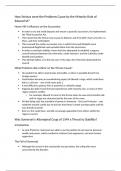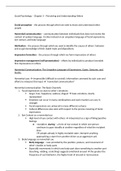Summary
Summary Revision Notes: OCR A Level History, Early Tudors (Mid-Tudor Crises), Chapter 5 - The Stability of the Monarchy
- Institution
- OCR
These notes provide a detailed summary of the fifth chapter (The Stability of the Monarchy) of Nicholas Fellows' and Mary Dicken's textbook - the OCR recommended textbook for the 'England - The Early Tudors' paper. I used these revision notes to achieve a Grade 9 in my history A Level.
[Show more]




